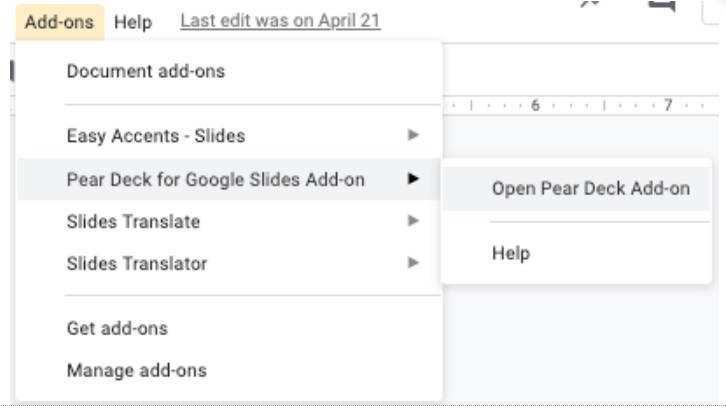Danielle Boggs, Champaign, IL danielleboggs@cpm.org
In my district, we were only doing asynchronous learning activities that reviewed past concepts, and offering optional extension activities that might include new content. I ran into lots of hurdles. I tried what felt like everything under the sun to try to hook students, including having students watch videos, make videos, and use Flipgrid, Quizizz, EdPuzzle, Pear Deck, and Google Forms just to try to find something that would engage everyone.
I would say my two biggest success stories were the use of Pear Deck and Google Forms, with the use of Quizizz as a not so distant third place.
My first success story includes one of my all time favorite lessons in CC3, 9.2.1, where students are introduced to the types of triangles you can make from squares. It took me a good amount of time to make a student-self paced Pear Deck (gdoc) that helped students explore that small, medium, and large squares could make no triangle, an acute, right, or obtuse triangle. I could not figure out how to make it more hands on for students to manipulate the squares, so this activity was more guided than I want it to be. I had the majority of my students engaged in the activity, however, which was very different from other activities! (Note: If you want to make a Pear Deck you must have the Pear Deck add-on.)

Second, my grade level created a Weekly Check-in Google Form (gdoc) that allowed us to get a read on how students were doing both social-emotionally and academically with remote learning, and I used this form each week to reach out to students and families, answer their questions, and inform them of the types of activities or assignments that might be my focus the following week.
With regard to engaging students, the majority also participated in almost every Quizizz assignment. Thankfully, they recently incorporated a lot of new features beyond just multiple choice, such as open ended questions (great for solving equations), poll questions (great for self-assessment), and more! With my Quizizz assignments I was able to analyze student’s answers and use them to make videos and slides demonstrating my favorite mistakes. Then I had students do a similar Quizizz in order to show their growth in understanding. Believe it or not, it worked. At least it worked better than all the other things I tried! This way I still got to provide students feedback and still be their teacher!
But overall, students missed their friends, they missed their teachers, and they needed that human contact for their middle school developing selves. I tried to incorporate more of their social-emotional needs, as much as I could anyway. My student teacher and I put together a series of tasks on Flipgrid that included saying “hello,” sharing what you are grateful for, show & tell, learning sign language, sharing jokes, talent show, interview a family member, and magic. The videos that we created were tremendously popular, including our “Pet Padlet,” where students posted pictures of their pets, and “Inspirations and Advice Padlet,” where students posted pictures of inspirational quotes, tips, and advice to help other students get through Remote Learning.
So, the moral of my story is, if you can do synchronous, do it. But if asynchronous is all you can do, Pear Deck, Google Forms, and Quizizz were my more successful go-tos.

